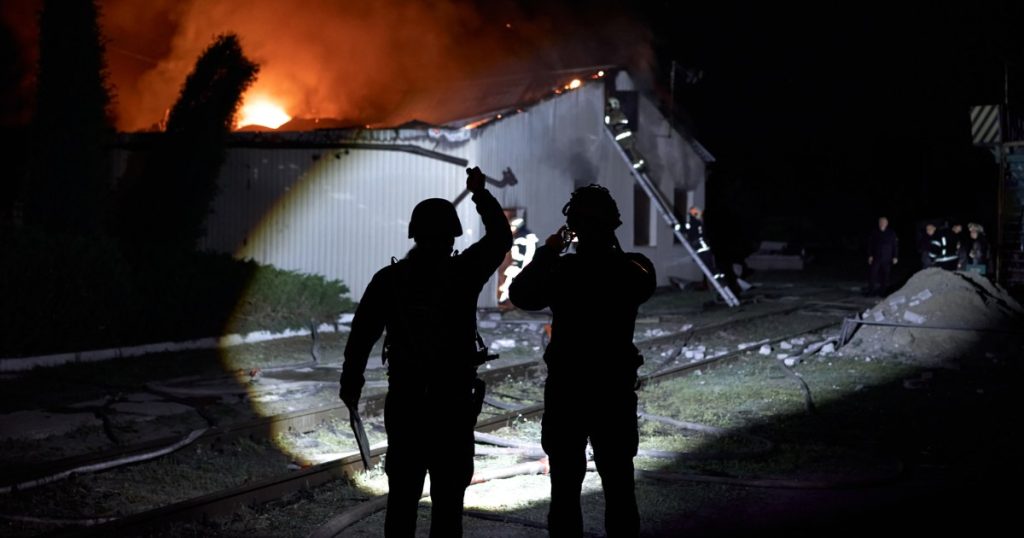Despite the initial success of Russian forces in seizing a dozen villages and advancing into the northeastern Kharkiv region, Ukrainian President Volodymyr Zelenskyy stated that Ukrainian forces had slowed the Russian advance and stabilized the situation. Zelenskyy confirmed that the Russian forces had only advanced about 6 miles into Ukrainian territory and had reached the first line of Ukraine’s defenses in the area. However, he acknowledged that insufficient air defense had allowed the enemy to cross into the region, enabling them to conduct air strikes with bombs and artillery from a distance. The Russian military’s main goal is to capture the key town of Vovchansk, which is just three miles from the border and has been the site of intense street battles between the two sides over the past week.
The ongoing conflict has forced thousands of residents to evacuate from the border area, with Ukraine’s military announcing on Thursday that they had halted the Russian advance in Vovchansk. Despite this temporary success, the situation remains tense as both sides continue to engage in fierce battles for control of strategic locations in the region. Russia has confirmed that a massive wave of drones attacked several regions of Ukraine, including occupied Crimea, further escalating the conflict and causing additional concern for the safety and security of civilians in the affected areas. The use of drones by Russian forces reflects the evolving nature of modern warfare and the increasing reliance on advanced technology to gain a tactical advantage on the battlefield.
The conflict in Ukraine is part of a larger geopolitical struggle between Russia and the West, with Moscow seeking to exert its influence and control over neighboring countries while Western nations, including the United States and European Union, have voiced strong condemnation of Russia’s actions and called for an immediate ceasefire and diplomatic resolution to the crisis. The escalating violence in Ukraine has raised concerns about the potential for a wider regional conflict and has prompted calls for increased international pressure on Russia to de-escalate the situation and respect Ukraine’s sovereignty and territorial integrity. The United Nations and other international organizations have also expressed alarm over the humanitarian impact of the conflict, with reports of civilian casualties and widespread destruction in the affected areas.
As the conflict continues to unfold, the Ukrainian government is facing mounting challenges in defending its territory and protecting its citizens from the violence and chaos of war. President Zelenskyy has called for international support and solidarity in the face of Russian aggression, emphasizing the need for a united front against the Kremlin’s destabilizing actions in the region. The conflict in Ukraine has also highlighted the importance of international cooperation and collaboration in addressing complex security challenges and promoting peace and stability in the region. The coming days and weeks will be crucial in determining the outcome of the conflict and the future of Ukraine, as both Ukrainian and Russian forces continue to engage in intense fighting for control of key territories in the country.
In conclusion, the conflict in Ukraine between Russian and Ukrainian forces has entered a new phase with the Russian advance in the northeastern Kharkiv region and the ongoing battle for control of the key town of Vovchansk. Despite initial setbacks, Ukrainian forces have managed to slow the Russian advance and stabilize the situation, but the conflict remains intense and volatile. The use of drones by Russian forces has raised concerns about the increasing sophistication of modern warfare and the potential for further escalation of the conflict. The international community must continue to pressure Russia to de-escalate the situation and work towards a peaceful resolution of the crisis to prevent further loss of life and suffering for the people of Ukraine.


